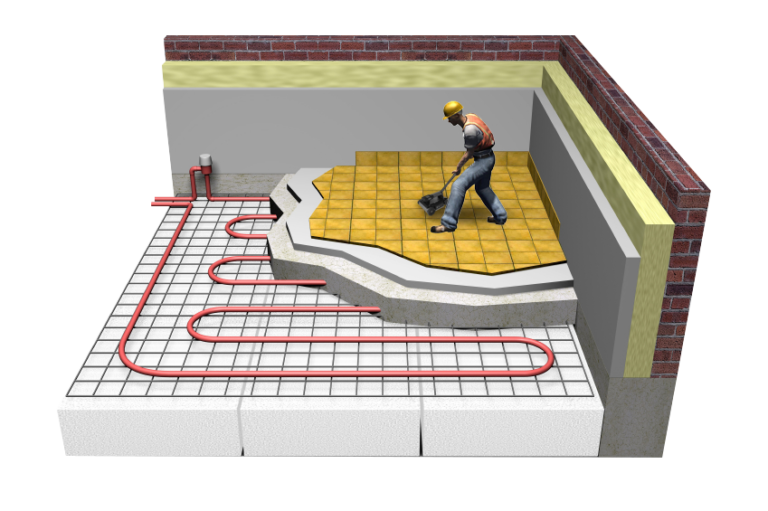The Advantages of RainierGPR Concrete Scanning for Construction Projects
The Advantages of RainierGPR Concrete Scanning for Construction Projects
Blog Article
Checking Out the Trick Benefits of Concrete Scanning in Building Projects
In the world of modern-day building and construction practices, the use of concrete scanning innovation has arised as a crucial tool for ensuring job performance and structural stability. From enhancing precaution to accurately spotting utilities concealed under the surface, the benefits of concrete scanning are multifaceted. The capability to enhance task timelines and decrease prices while preserving existing structures is a testimony to the value this innovation offers the building and construction industry. As we explore the nuanced advantages of concrete scanning, it comes to be apparent that its effect expands far beyond surface-level assessments, using a look into the elaborate web of advantages waiting to be uncovered.
Improved Safety And Security Measures
Utilizing sophisticated concrete scanning modern technology improves precaution on building and construction websites by providing precise detection of prospective hazards hidden below the surface area. This modern technology enables building and construction groups to recognize rebar, conduits, post-tension cords, and various other blockages prior to excavation or drilling, dramatically reducing the risk of mishaps. By pinpointing these elements exactly, workers can stay clear of damaging crucial architectural parts, hence preventing injuries, delays, and costly repair services.
Additionally, concrete scanning plays an essential role in making sure the honesty of existing frameworks during developments or improvements. By finding weaknesses, spaces, or degeneration within concrete components, engineers can attend to these issues proactively, enhancing the overall security and durability of the structure. This proactive approach not just minimizes the risk of architectural failures but also lessens the possibility for crashes triggered by unanticipated structural shortages.
Basically, the execution of concrete scanning modern technology functions as a proactive precaution that safeguards both building and construction employees and the structural stability of buildings, eventually contributing to the overall success and performance of building and construction jobs. - RainierGPR Concrete Scanning
Accurate Discovery of Energies
Concrete scanning technology promotes precise recognition of below ground utilities, improving building and construction website security and effectiveness. Exact discovery of energies is critical in building and construction jobs to stop expensive problems, job delays, and most importantly, make sure the safety and security of employees and the general public. By using advanced scanning modern technologies such as ground-penetrating radar (GPR) and electromagnetic induction, building and construction groups can map out the place of buried pipelines, cable televisions, and various other energies with high levels of precision.

Time and Cost Performance

Concrete scanning technology enables construction groups to accurately find rebar, post-tension cables, and other ingrained objects within concrete structures. This specific information aids in avoiding expensive errors such as unintentional damages to vital aspects during drilling, reducing, or coring tasks. In addition, by recognizing prospective go to website threats in advance, the requirement for pricey repairs or rework due to damages can be decreased, causing set you back financial savings for the project.

Moreover, the capability to swiftly and accurately detect utilities below the surface without triggering any kind of damage not just conserves time but also prevents pricey disruptions to existing facilities. Generally, the moment and expense performance advantages of concrete scanning make it a very useful tool for improving building and construction job monitoring informative post and implementation.
Conservation of Structural Honesty
Protecting the architectural stability of structures and facilities is extremely important in ensuring long-term stability and security. Concrete scanning plays a crucial function in this conservation process by permitting building professionals to identify potential risks to the architectural stability of a structure or framework before they rise into major concerns. Via the use of advanced scanning innovations such as ground-penetrating radar (GPR) and electro-magnetic induction, construction groups can non-invasively evaluate the condition of concrete frameworks, locate rebar, post-tension cables, and other ingrained components, and determine any gaps, splits, or deterioration within the concrete.
Improved Job Planning
In order to make sure the successful implementation of construction projects, meticulous interest to detail and complete planning are vital components that stem from an extensive understanding of the structural problems identified with concrete scanning. Eventually, integrating concrete scanning into the task planning stage boosts control amongst group participants, promotes aggressive analytic, and contributes to the successful distribution of building and construction projects within budget plan and schedule restrictions.
Conclusion
In conclusion, concrete scanning provides countless benefits in building and construction projects. By boosting safety steps, accurately spotting utilities, boosting time and cost performance, preserving architectural stability, and helping in task planning, concrete scanning verifies to be a crucial tool for successful job execution. Its ability to alleviate dangers, raise effectiveness, and make sure project integrity makes it an indispensable property for building and construction experts.
In the world of modern-day building techniques, the utilization of concrete scanning innovation has arised check that as an essential tool for making sure task efficiency and architectural honesty.Concrete scanning innovation makes it possible for building and construction teams to precisely find rebar, post-tension cables, and other ingrained things within concrete frameworks. Through the use of advanced scanning innovations such as ground-penetrating radar (GPR) and electro-magnetic induction, building groups can non-invasively examine the condition of concrete frameworks, locate rebar, post-tension cords, and various other embedded elements, and recognize any gaps, splits, or damage within the concrete.
In order to make sure the successful execution of construction jobs, meticulous attention to detail and comprehensive planning are crucial elements that stem from an extensive understanding of the structural problems determined through concrete scanning. Inevitably, integrating concrete scanning into the job preparation stage improves sychronisation among team participants, cultivates proactive analytic, and contributes to the successful delivery of construction projects within budget and schedule restrictions.
Report this page